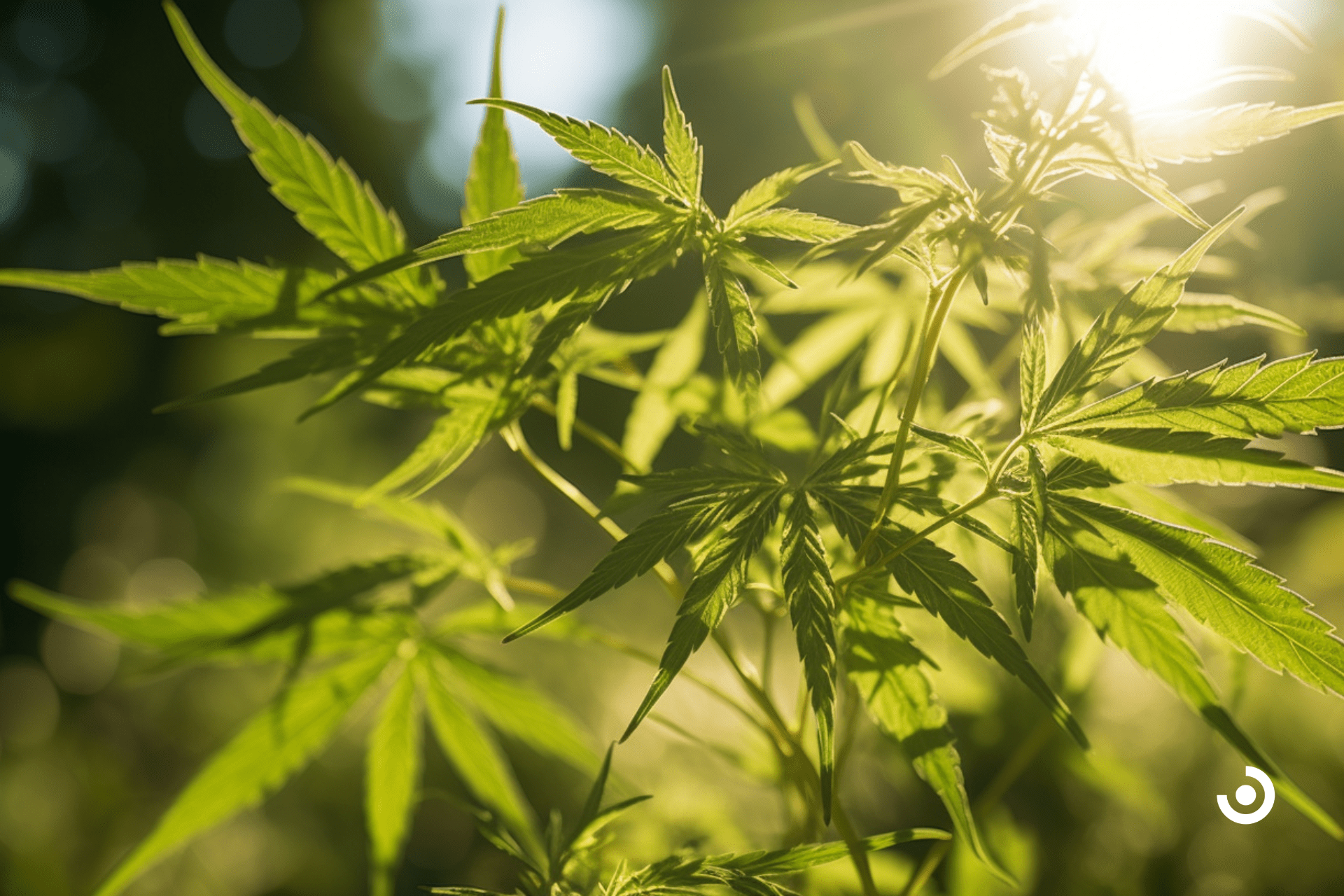The Psychotropic Effects Of Medical Marijuana Explained
by Ayesha Aziz · January 9, 2024
Unveiling the Mind-Bending Benefits: Explore the Psychotropic Effects of Medical Marijuana and Revolutionize Your Healthcare Journey. Click now to discover more!

Have you ever wondered why medical marijuana has such powerful effects on the mind and body? It’s a fascinating topic that has recently sparked much debate and research.
In this article, we will delve into the psychotropic effects of medical marijuana, exploring how it interacts with the body’s endocannabinoid system and the different compounds responsible for its unique properties.
You may have heard of the endocannabinoid system, but do you truly understand its role in our bodies? Well, let me tell you, it’s a key player when it comes to the psychotropic effects of medical marijuana.
This intricate system comprises receptors, enzymes, and endocannabinoids that work together to regulate various processes in our bodies, including mood, pain sensation, and appetite.
By interacting with these receptors, medical marijuana can have a profound impact on our mental and emotional well-being. But how exactly does it do that? Let’s find out together!
Key Takeaways
- Medical marijuana interacts with the body’s endocannabinoid system and activates certain brain regions, producing psychotropic effects.
- THC, the primary psychoactive compound in marijuana, produces euphoria, relaxation, and altered perception of time.
- CBD, a non-psychoactive compound, has anti-inflammatory and antipsychotic effects, providing relaxation and reducing inflammation and pain.
- It is important to start with a low dosage, consult with a healthcare professional, and communicate for dosage adjustments or alternative treatments to manage potential risks and side effects.
The Endocannabinoid System: A Key Player in Psychotropic Effects
Now, you’re starting to understand why the endocannabinoid system is such a crucial element in the mind-altering effects of medical marijuana. This complex system within your body significantly regulates various physiological processes, including mood, appetite, pain sensation, and even memory.
The endocannabinoid system consists of endocannabinoids, which are natural substances produced by your body, and cannabinoid receptors that are found throughout your brain and body.
When you consume medical marijuana, the cannabinoids present in the plant interact with the cannabinoid receptors in your endocannabinoid system. This interaction leads to activating certain brain regions and releasing neurotransmitters, which are chemicals that transmit signals between nerve cells in your brain. The result? A wide range of psychotropic effects, such as euphoria, relaxation, altered perception of time, and even heightened creativity.
Understanding the role of the endocannabinoid system in the psychotropic effects of medical marijuana is crucial for those who have a subconscious desire to serve others. By recognizing the intricate relationship between this system and the mind-altering effects of cannabis, individuals in the healthcare and wellness industries can better serve patients who may benefit from medical marijuana.
This knowledge allows for informed discussions about the potential benefits and risks of using medical marijuana, as well as the development of personalized treatment plans that take into account an individual’s unique endocannabinoid system.
THC and CBD: Understanding the Different Compounds
Understanding the different compounds, you’ll be amazed at the unique effects that THC and CBD can have on your mind and body.
THC, or delta-9-tetrahydrocannabinol, is the primary psychoactive compound found in marijuana. When consumed, THC interacts with the receptors in your brain and central nervous system, producing a range of effects such as euphoria, relaxation, and altered perception of time. It can also stimulate appetite and reduce nausea, making it beneficial for individuals undergoing chemotherapy or suffering from appetite loss due to medical conditions. However, it’s important to note that THC can also cause anxiety and paranoia in some individuals, so it’s essential to find the right dosage and strain that works best for you.
On the other hand, CBD, or cannabidiol, is a non-psychoactive compound found in marijuana. Unlike THC, CBD does not produce a “high” sensation, but it does offer a variety of therapeutic benefits. CBD has been shown to have anti-inflammatory properties, making it effective in reducing pain and inflammation. It also has antipsychotic effects and may help alleviate symptoms of anxiety and depression. CBD is commonly used by individuals seeking relief from chronic pain, insomnia, and other conditions without experiencing the psychoactive effects associated with THC.
Understanding the different compounds in medical marijuana is crucial in finding the right treatment for your specific needs. Whether you’re seeking pain relief, relaxation, or assistance with mental health conditions, THC and CBD offer unique effects that can cater to your individual requirements.
Consult with a medical professional or knowledgeable budtender to determine the appropriate strain and dosage of medical marijuana for you. By understanding the compounds and their effects, you can make informed decisions that benefit both your mind and body.
Euphoria and Relaxation: How Medical Marijuana Alters Mood
Imagine feeling an overwhelming sense of bliss and tranquility wash over you as you indulge in the wonders of medical marijuana. The euphoric and relaxing effects of this plant are what make it a popular choice for those seeking relief from anxiety, stress, and even chronic pain.
When you consume medical marijuana, the compounds THC and CBD interact with the receptors in your brain, creating a cascade of effects that can alter your mood in a positive way.
THC, the psychoactive compound in marijuana, is responsible for the euphoric feeling often referred to as a “high.” It binds to the CB1 receptors in your brain, which are primarily located in the areas responsible for pleasure, memory, coordination, and time perception. This interaction leads to a release of dopamine, a neurotransmitter associated with feelings of pleasure and reward. As a result, you may experience a sense of happiness, relaxation, and an overall uplifted mood.
On the other hand, CBD, a non-psychoactive compound, works differently. It does not directly bind to the CB1 receptors but instead interacts with other receptors in your brain and body. CBD has been found to have anxiolytic (anti-anxiety) and sedative properties, which can contribute to a feeling of relaxation and calmness. It can also help reduce inflammation and pain, providing further relief and enhancing the overall relaxing effects of medical marijuana.
Managing Pain and Anxiety with Medical Marijuana
To effectively manage pain and anxiety, you can rely on the therapeutic benefits of using medical marijuana. This natural remedy has been found to provide relief and comfort to those suffering from chronic pain and anxiety disorders.
Here are three ways in which medical marijuana can help you in managing your pain and anxiety:
- Pain Management: Medical marijuana has been proven to be effective in reducing pain and improving the quality of life for individuals with chronic pain conditions such as arthritis, multiple sclerosis, and fibromyalgia. The cannabinoids present in marijuana interact with the body’s endocannabinoid system, which plays a crucial role in regulating pain. By activating the endocannabinoid receptors, medical marijuana can help alleviate pain and provide much-needed relief.
- Anxiety Reduction: Anxiety disorders can be debilitating and have a significant impact on daily functioning. Medical marijuana has shown promise in reducing anxiety symptoms and promoting a sense of calm and relaxation. The cannabinoids in marijuana have anxiolytic properties, meaning they can help reduce feelings of anxiety and promote an overall sense of well-being. By incorporating medical marijuana into your treatment plan, you can potentially experience a reduction in anxiety symptoms and an improved quality of life.
- Sleep Improvement: Many individuals with chronic pain and anxiety disorders also struggle with sleep disturbances. Medical marijuana can help promote better sleep by reducing pain, anxiety, and insomnia. The relaxing and sedative effects of certain strains of marijuana can help you fall asleep faster and stay asleep throughout the night. By improving your sleep quality, medical marijuana can contribute to your overall well-being and help you better manage your pain and anxiety.
By utilizing medical marijuana as a tool for pain and anxiety management, you can experience relief and improved quality of life. Remember to consult with a medical professional to determine the appropriate dosage and strain for your specific needs. Leafy Doc brings you top-notch marijuana doctors. Click here and find yours.
Potential Risks and Side Effects of Psychotropic Effects
While some individuals may be concerned about potential risks and side effects, it’s important to note that the psychotropic effects of medical marijuana can vary from person to person. Just like any medication, medical marijuana can have both positive and negative effects on the mind and body.
Some people may experience feelings of relaxation, euphoria, and an overall improvement in mood. These effects can be beneficial for individuals who are dealing with chronic pain or anxiety. However, it’s also possible for some individuals to experience negative side effects such as paranoia, anxiety, or even hallucinations. It’s crucial to consult with a healthcare professional and start with a low dosage to determine the right amount for your body.
It’s worth mentioning that the potential risks and side effects of medical marijuana are relatively mild compared to other medications. In fact, many people find that the benefits of using medical marijuana outweigh any negative effects. It’s also important to note that the psychotropic effects of medical marijuana are temporary and will wear off over time.
Suppose you do experience any negative side effects, such as increased anxiety or paranoia. In that case, it’s important to communicate this with your healthcare provider so they can adjust your dosage or explore alternative treatment options. Don’t forget everyone’s experience with medical marijuana is unique, so it’s important to listen to your body and prioritize your own well-being.
Frequently Asked Questions
How does the endocannabinoid system interact with other bodily systems to produce psychotropic effects?
The endocannabinoid system, found throughout your body, interacts with other bodily systems, such as the nervous and immune systems, to produce psychotropic effects. It helps regulate mood, pain, appetite, and sleep, among other functions.
Can the psychotropic effects of medical marijuana vary depending on the strain or dosage?
Yes, the psychotropic effects of medical marijuana can vary depending on the strain and dosage. Different strains have different levels of cannabinoids, which can affect the intensity and type of high experienced.
Are there any long-term effects of using medical marijuana for managing pain and anxiety?
Yes, there can be long-term effects from using medical marijuana to manage pain and anxiety. It’s important to note that these effects can vary from person to person, so it’s best to consult with a healthcare professional for personalized guidance.
Does medical marijuana have any potential interactions with other medications?
Medical marijuana can interact with other medications, potentially causing adverse effects. It’s crucial to consult with your doctor or pharmacist to ensure there are no harmful interactions and to find the best treatment plan for you.
Are there any specific medical conditions or patient populations for whom the psychotropic effects of medical marijuana may be more pronounced or less effective?
For some medical conditions and patient populations, the psychotropic effects of medical marijuana may be more pronounced or less effective. Factors like age, overall health, and individual sensitivity can play a role in how it affects you.
Last Updated: January 29, 2025
Get Approved for Your Medical Marijuana Card in Minutes!

Get Your Medical Card
Connect with a licensed physician online in minutes

Like This Article?
Share with your friends
Table of Contents
Keep Reading
-
Exploring The Anti-inflammatory Properties Of Cannabis
Uncover the potential of cannabis in combating inflammatory diseases and promoting overall wellness. Dive into the anti-inflammatory properties of cannabis and take steps towards a healthier lifestyle today!
-
Boosting Energy Levels With Terpenes In Cannabis
Unleash your energy potential with the power of terpenes found in cannabis! Discover how these natural compounds can skyrocket your energy levels and boost productivity. Click now to unlock the secret to increased vitality and take charge of your day!
-
Embark On A Cannabis Meditation Retreat: A Journey To Inner Bliss
Embark on a transformative journey to inner bliss with Cannabis Meditation Retreats. Experience ultimate relaxation and discover a new level of peace within yourself. Book your retreat now for an unforgettable experience!



